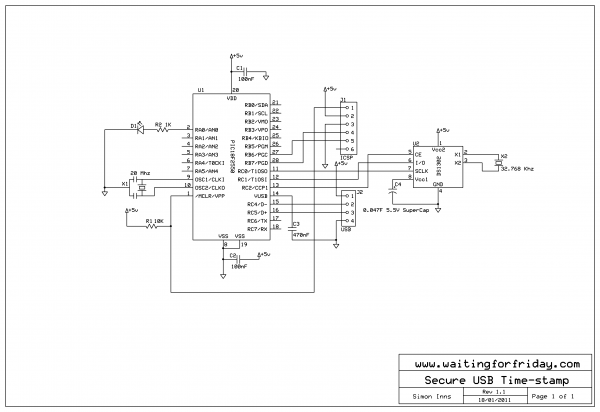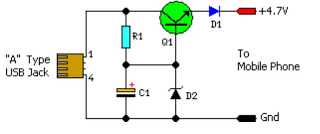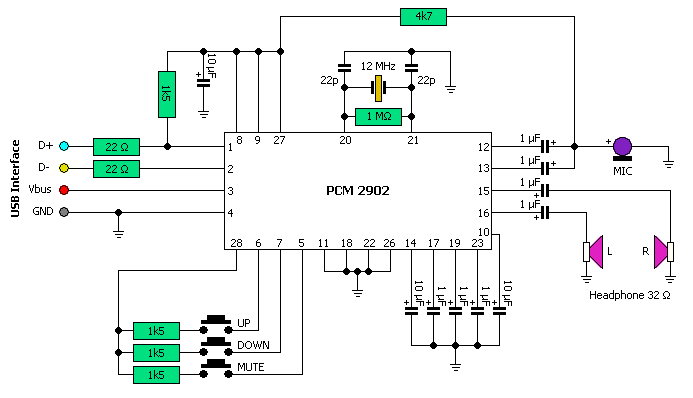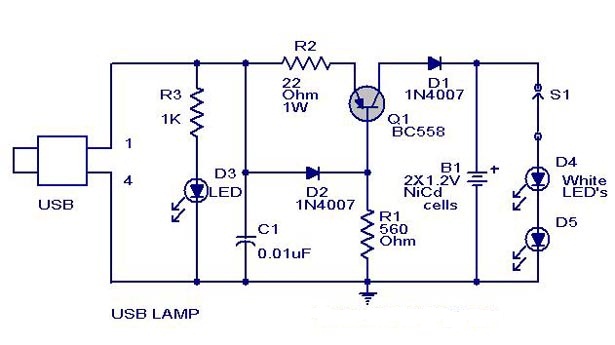
Secure USB Time-Stamp for Data-Logging

This project implements a USB device that provides a real-time clock for time-stamping events in a non-networked embedded computer environment. For embedded applications requiring periodic time-stamping (such as entry-system logs and configuration audit logs), an accurate real-time clock is necessary, ideally more precise than that typically provided by a PC's motherboard. Additionally, it is preferable to have a method for confirming that log and audit files have not been tampered with. The secure USB time-stamp device addresses many of these concerns in a compact form factor using minimal components. The device logs the time at which the clock was last updated and, if requested by the USB host, the time when it last issued a time-stamp. This allows the host application to compare its logs with the time values stored by the device to detect any alterations. The device retains the last time setting and the last logged time-stamp in the PIC's non-volatile EEPROM memory, which can hold data for up to 40 years without battery backup. The SUTS device is powered by a PIC18F2550 microcontroller, which provides an onboard USB interface and the necessary SPI serial interface to the DS1302 real-time clock chip. To prevent loss of time setting when powered off or disconnected, the DS1302 is backed up by a 0.047F super-capacitor. A super-capacitor was selected over a lithium cell because it is more difficult to remove (preventing casual or deliberate resets), charges rapidly (in less than 5 minutes from empty to fully charged), and can power the RTC for approximately 90 hours without losing time. Additionally, the super-capacitor has a virtually unlimited lifespan and does not face the environmental restrictions associated with lithium devices. The PIC18F2550 requires an external oscillator to utilize the USB transceiver module; therefore, a 20MHz resonator with built-in capacitors is used, as the DS1302 is responsible for timekeeping and does not require a more expensive crystal oscillator. An ICSP header is included on the board but can be omitted if the PIC is programmed and code-protected to prevent firmware alteration. The device is powered by the USB host connection and does not require an external power supply unit. The circuit board design is a single-layer PCB using only through-hole components to facilitate easy duplication, with no wire links or vias required. The firmware is entirely written in Hi-Tech C and is based on an open-source framework for USB Generic HID devices utilizing the PIC18F and Windows. The host transmits the date and time to the device, which then sends the information to the DS1302 while also storing it in the EEPROM for later retrieval as the last date-time at which the clock was set. Upon receiving a command, the current date-time from the DS1302 is sent back to the host, including a 'clock status' flag indicating whether the DS1302 has been set (flag value of one) or has lost its time information due to depleted backup power (flag value of zero). This clock status flag informs the host whether the received data is valid or if the clock needs to be set. The clock status is also indicated by an LED on the device, which illuminates only after the clock is set. This command does not log the date-time to EEPROM, allowing for regular fast-polling reads of the time. This command is similar to command 0x81; however, it also prompts the PIC to store the read date-time in EEPROM. The EEPROM is rated for approximately 1,000,000 write cycles, with a retention span exceeding 40 years.
The schematic for the USB time-stamp device features the PIC18F2550 microcontroller at its core, which manages USB communication and interfaces with the DS1302 real-time clock through the SPI protocol. The DS1302 is connected to the microcontroller's SPI pins, allowing for efficient data exchange. The power supply circuitry includes the super-capacitor connected to the DS1302, ensuring that the clock remains operational during power interruptions. The USB interface is designed to facilitate easy connection to host systems, while the ICSP header enables firmware updates if required. The PCB layout is optimized for minimal space usage, with all components arranged to avoid the need for additional wire links or vias. This design choice enhances reliability and manufacturability. The LED indicator is connected to a GPIO pin on the PIC18F2550, providing a visual cue regarding the clock's operational status. Overall, this project represents a robust solution for time-stamping needs in embedded systems, combining accuracy, reliability, and ease of use in a compact design.This project implements a USB device which provides a real-time clock for the purpose of time-stamping events in an non-networked embedded computer environment. For embedded applications where a periodic time-stamp is required (such as entry-system logs, configuration audit logs, etc.
) it is necessary to have a fairly accurate real-time clock (bet ter than that typically provided by a PC`s motherboard) to generate time-stamps in logging and audit trails. Furthermore, it is preferable to have a method of confirming that the log/audit files have not been tampered with in anyway.
The secure USB time-stamp device solves many of these issues in a very small form factor using minimal components. The device logs the time at which the clock was last updated and (if requested by the USB host) the time when it last served a time-stamp.
This allows the host application to examine it`s own logs and compare them to the time values stored by the device (to detect when logs have been altered). The device stores the last time setting and the last logged time-stamp in the PIC`s non-volatile EEPROM memory which can hold the data for up to 40 years without battery backup.
The SUTS device is powered by a PIC18F2550 microcontroller which provides an on-board USB interface as well as the required SPI serial interface to the DS1302 real-time clock chip. To prevent loss of time setting when powered off or disconnected the DS1302 is backed up by a 0. 047F super-capacitor. A super-capacitor was chosen (rather than a lithium cell) since it is harder to remove (preventing a casual or deliberate reset of the time), charges very fast (less than 5 minutes from empty to fully-charged) and is capable of powering the RTC for around 90 hours without losing time.
Furthermore, the super-cap has a virtually unlimited lifespan and does not suffer from the restrictions placed on lithium devices (since it`s chemical make-up is more environmentally friendly). The PIC18F2550 requires an external oscillator in order to use the USB transceiver module, so a 20Mhz resonator with built in capacitors is used (since the DS1302 is responsible for time-keeping the PIC does not need a more expensive crystal oscillator).
An ICSP header is also included on the board, but can be omitted if the PIC is programmed and code-protected to prevent alteration of the firmware. The device is powered by the USB host connection and requires no external power-supply unit. The circuit board design is a single-layer PCB using only through-hole components to make it as easy as possible to duplicate.
No wire links or vias are required. Here is a picture of the PCB artwork which is included in the downloads section below: The firmware is completely written in Hi-Tech C and is based on my Open Source Framework for USB Generic HID devices based on the PIC18F and Windows. It is available for download in the downloads section below. The host passes the date and time to the device and the device sends the information to the DS1302, also the information is stored in the EEPROM for later retrieval (as the last date-time at which the clock was set) Once the device receives the command the current date-time of the DS1302 is passed back to the host including a `clock status` flag which is zero if the DS1302 has not been set (or has lost its time information due to depleted backup power) or one if the device is running normally.
The clock status flag lets the host know if the received data is valid or if it needs to set the clock (the clock status is also show by the LED on the device which is only lit after the clock is set). This command does not cause the device to log the date-time to EEPROM so can be used for regular fast-polling reads of the time.
This command is the same as 0x81 however it also causes the PIC to store the read date-time in EEPROM. The EEPROM is rated for approximately 1, 000, 000 write cycles with a retention span of >40 ye 🔗 External reference
The schematic for the USB time-stamp device features the PIC18F2550 microcontroller at its core, which manages USB communication and interfaces with the DS1302 real-time clock through the SPI protocol. The DS1302 is connected to the microcontroller's SPI pins, allowing for efficient data exchange. The power supply circuitry includes the super-capacitor connected to the DS1302, ensuring that the clock remains operational during power interruptions. The USB interface is designed to facilitate easy connection to host systems, while the ICSP header enables firmware updates if required. The PCB layout is optimized for minimal space usage, with all components arranged to avoid the need for additional wire links or vias. This design choice enhances reliability and manufacturability. The LED indicator is connected to a GPIO pin on the PIC18F2550, providing a visual cue regarding the clock's operational status. Overall, this project represents a robust solution for time-stamping needs in embedded systems, combining accuracy, reliability, and ease of use in a compact design.This project implements a USB device which provides a real-time clock for the purpose of time-stamping events in an non-networked embedded computer environment. For embedded applications where a periodic time-stamp is required (such as entry-system logs, configuration audit logs, etc.
) it is necessary to have a fairly accurate real-time clock (bet ter than that typically provided by a PC`s motherboard) to generate time-stamps in logging and audit trails. Furthermore, it is preferable to have a method of confirming that the log/audit files have not been tampered with in anyway.
The secure USB time-stamp device solves many of these issues in a very small form factor using minimal components. The device logs the time at which the clock was last updated and (if requested by the USB host) the time when it last served a time-stamp.
This allows the host application to examine it`s own logs and compare them to the time values stored by the device (to detect when logs have been altered). The device stores the last time setting and the last logged time-stamp in the PIC`s non-volatile EEPROM memory which can hold the data for up to 40 years without battery backup.
The SUTS device is powered by a PIC18F2550 microcontroller which provides an on-board USB interface as well as the required SPI serial interface to the DS1302 real-time clock chip. To prevent loss of time setting when powered off or disconnected the DS1302 is backed up by a 0. 047F super-capacitor. A super-capacitor was chosen (rather than a lithium cell) since it is harder to remove (preventing a casual or deliberate reset of the time), charges very fast (less than 5 minutes from empty to fully-charged) and is capable of powering the RTC for around 90 hours without losing time.
Furthermore, the super-cap has a virtually unlimited lifespan and does not suffer from the restrictions placed on lithium devices (since it`s chemical make-up is more environmentally friendly). The PIC18F2550 requires an external oscillator in order to use the USB transceiver module, so a 20Mhz resonator with built in capacitors is used (since the DS1302 is responsible for time-keeping the PIC does not need a more expensive crystal oscillator).
An ICSP header is also included on the board, but can be omitted if the PIC is programmed and code-protected to prevent alteration of the firmware. The device is powered by the USB host connection and requires no external power-supply unit. The circuit board design is a single-layer PCB using only through-hole components to make it as easy as possible to duplicate.
No wire links or vias are required. Here is a picture of the PCB artwork which is included in the downloads section below: The firmware is completely written in Hi-Tech C and is based on my Open Source Framework for USB Generic HID devices based on the PIC18F and Windows. It is available for download in the downloads section below. The host passes the date and time to the device and the device sends the information to the DS1302, also the information is stored in the EEPROM for later retrieval (as the last date-time at which the clock was set) Once the device receives the command the current date-time of the DS1302 is passed back to the host including a `clock status` flag which is zero if the DS1302 has not been set (or has lost its time information due to depleted backup power) or one if the device is running normally.
The clock status flag lets the host know if the received data is valid or if it needs to set the clock (the clock status is also show by the LED on the device which is only lit after the clock is set). This command does not cause the device to log the date-time to EEPROM so can be used for regular fast-polling reads of the time.
This command is the same as 0x81 however it also causes the PIC to store the read date-time in EEPROM. The EEPROM is rated for approximately 1, 000, 000 write cycles with a retention span of >40 ye 🔗 External reference





